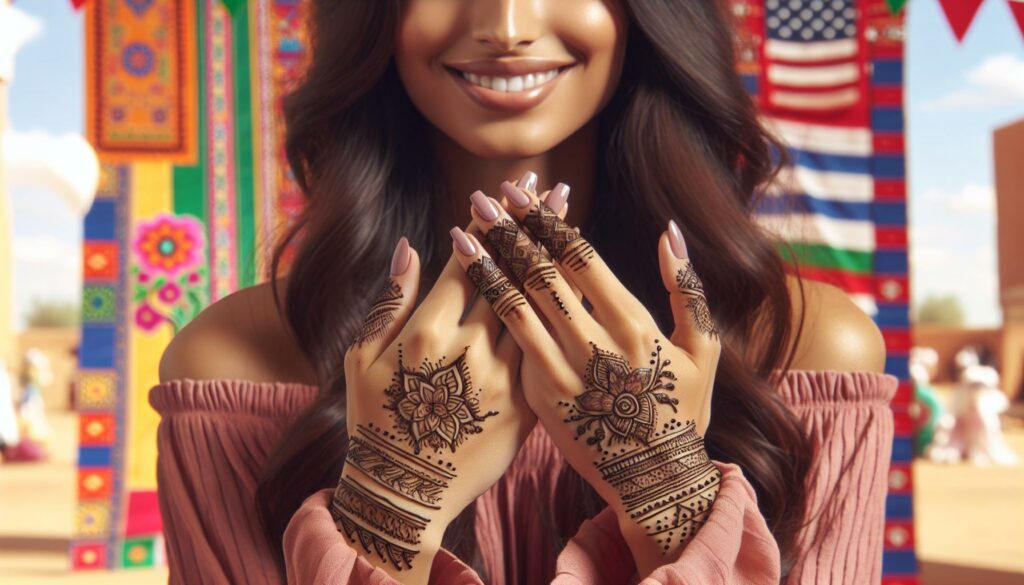Mehndi has always fascinated me with its intricate patterns and deep cultural roots. From weddings to festivals, this beautiful art form adds a touch of elegance and celebration to any occasion. Simple mehndi designs, in particular, have a charm that makes them perfect for everyday wear, allowing anyone to embrace this timeless tradition without feeling overwhelmed.
In this article, I’ll explore some stunning yet beautiful mehndi:3fgpkolbwge= mehndi design simple that capture the essence of beauty and creativity. Whether you’re a beginner or looking for fresh inspiration, these designs will help you express your unique style while celebrating the rich heritage of mehndi. Let’s dive into the world of beautiful mehndi and discover how simple designs can make a lasting impression.
Key Takeaways
- Cultural Significance: Mehndi is deeply rooted in cultural traditions, symbolizing joy and celebration in various communities, particularly in South Asia and the Middle East.
- Simplicity in Designs: Simple mehndi designs, featuring floral motifs and geometric shapes, offer a stylish yet understated option for everyday wear, making the art accessible to beginners.
- Versatility: Mehndi can be adapted for both everyday use and special occasions, with intricate designs celebrating significant life events, enhancing individual expression.
- Modern Trends: Contemporary mehndi designs blend traditional elements with modern aesthetics, emphasizing minimalism and personal expression while keeping cultural significance intact.
- Application Tips: Proper preparation and techniques, such as using quality henna and maintaining a thick application, are essential for achieving beautiful, long-lasting results.
- Patience for Results: The color of mehndi develops over 24 to 48 hours, highlighting the importance of patience in achieving the desired depth and richness of the design.
Beautiful Mehndi:3fgpkolbwge= Mehndi Design Simple
Mehndi, also known as henna, has deep-rooted cultural significance, especially in Indian and Middle Eastern traditions. I appreciate its role in celebrations, symbolizing joy and beauty. The designs range from complex patterns to elegant simplicity. Simple mehndi designs offer a fresh approach, making it easy for anyone to enjoy this art form.
Simple designs often feature floral motifs, geometric shapes, and minimalistic patterns. I find that these styles resonate well with individuals who prefer subtlety in their adornments. They provide an elegant look while allowing for personal expression. Moreover, applying simple mehndi can be a quick process, perfect for those short on time.
Many individuals choose to wear mehndi during significant life events, such as weddings, festivals, and personal milestones. I believe that even daily life can benefit from the beauty of mehndi. Integrating these designs into everyday wear adds a touch of grace that enhances one’s style without overwhelming it.
Whether for a special occasion or casual wear, beautiful mehndi designs serve as a canvas for creativity and cultural representation. I encourage everyone to explore the world of mehndi, discovering their unique designs that reflect personal tastes and cultural heritage.
Importance of Mehndi in Culture
Mehndi holds a significant place in cultural practices, especially in South Asian and Middle Eastern communities. It represents joy, celebration, and the richness of traditions.
Traditional Significance
Mehndi’s use has roots in ancient customs, primarily serving as a symbol of happiness and prosperity during important life events. In weddings, mehndi application involves intricate designs, which symbolize love and commitment. I appreciate how various regions showcase unique styles, each reflecting local heritage. For instance, Rajasthani designs often include peacocks and spirals, while Arabic patterns typically feature bold, flowing lines. Mothers and brides often share the ritual of applying mehndi, fostering a sense of community and familial bonds. This age-old practice not only beautifies but also carries deep cultural meanings, making it an essential aspect of ceremonies.
Modern Trends
Modern trends in mehndi designs adapt to contemporary aesthetics while keeping cultural significance intact. Minimalistic and abstract patterns have gained popularity among younger individuals, emphasizing personal expression and versatility. I find that simple designs, often featuring clean lines and fewer elements, can be elegant without overwhelming visuals. The rise of temporary tattoo alternatives has also introduced new ways to enjoy mehndi, appealing to those who want to experiment without commitment. Ultimately, the fusion of traditional and modern influences keeps the art of mehndi relevant while maintaining its cultural roots.
Beautiful Mehndi Designs
Beautiful Mehndi:3fgpkolbwge= Mehndi Design Simple offer versatility, allowing individuals to choose styles that fit their needs. Whether for everyday wear or special events, the beauty of mehndi lies in its simplicity and intricacy.
Simple Designs for Beginners
Beautiful Mehndi:3fgpkolbwge= Mehndi Design Simple feature straightforward patterns, perfect for novices. They often include basic floral motifs, leaves, and geometric shapes. Popular choices for beginners are:
- Floral Patterns: Single flowers with thin stems create a delicate look.
- Straight Lines: Clean, bold lines form a minimalist style.
- Dot Designs: Small dots can be arranged in patterns or clusters for added flair.
- Half-hand Designs: Covering only part of the hand provides an elegant touch without overwhelming details.
These simple designs are quick to apply, making them ideal for people with busy schedules. They introduce newcomers to mehndi art without complex techniques.
Intricate Designs for Special Occasions
Intricate mehndi designs shine during special events like weddings and festivals. These elaborate patterns often depict motifs such as:
- Peacocks: Symbolizing beauty and grace, peacock designs enhance the overall aesthetic.
- Mandala Patterns: Circular designs represent harmony and unity, adding depth.
- Bridal Mehndi: Customary designs for brides showcase intricate details, including symbols of love and fertility.
- Arabic-Inspired Designs: Bold, flowing lines create striking visuals, emphasizing elegance.
These designs typically require more time and skill to apply but can create breathtaking results. They symbolize significant moments and cultural heritage, making them memorable choices for important celebrations.
Tips for Applying Mehndi
Applying mehndi involves careful preparation and technique, ensuring beautiful, lasting results. I focus on key steps that enhance the application process.
Preparation and Techniques
- Cleanse the Skin: I start by cleansing the hands with soap and water, removing any oils. This ensures better adhesion of the mehndi.
- Choose Quality Henna: I select high-quality, natural henna powder, which provides rich color. I mix it with lemon juice and sugar to create a smooth paste.
- Create a Conical Applicator: I use a plastic cone or a classic piping bag for precision. This allows for controlled lines and intricate designs.
- Practice Steady Hands: I practice drawing on paper first. Steady hands result in cleaner lines and more detailed patterns.
- Start Simple: I begin with basic designs. This builds confidence before moving on to more complex patterns.
- Apply Generously: I ensure the mehndi is applied thickly. A thicker layer yields a deeper stain.
- Work in Sections: I apply mehndi in small sections, allowing for focused detailing without the paste drying out prematurely.
- Maintain Good Posture: I choose a comfortable position to minimize hand fatigue. This helps me maintain consistency throughout the application.
- Avoid Water: I avoid water for at least six hours after application. Keeping the mehndi dry allows for darker staining.
- Use a Sugar Lemon Mix: I apply a sugar and lemon juice mixture post-application. This enhances color and helps it set longer.
- Wrap the Design: I wrap the mehndi with plastic or cotton. This protects it from smudging and maintains warmth for better results.
- Limit Exposure: I keep my hands away from water and soap during the initial drying period. This prevents fading and ensures a lasting design.
- Keep Moisturized: Once the mehndi flakes off, I apply coconut oil or balm to nourish the skin and retain the design’s depth.
- Patience is Key: I remain patient, as colors develop over 24 to 48 hours. A little waiting leads to stunning results.
Incorporating Art into Daily Life
Embracing the beauty of mehndi is a journey that celebrates culture and personal expression. Simple designs offer a wonderful way to incorporate this art into daily life without overwhelming complexity. They allow me to appreciate the intricate beauty of mehndi while staying true to my style.
Whether I’m preparing for a special occasion or just want to add a touch of elegance to my everyday look, simple mehndi designs are versatile and accessible. I encourage everyone to explore this beautiful tradition, experiment with patterns, and enjoy the process. After all, mehndi isn’t just about the design; it’s about the joy and connection it brings to our lives.

